Zukei Puzzles (Polygon Finding Puzzles)
Put your geometry knowledge to the test with these zukei puzzles from Naoki Inaba which involve finding various types of polygons.
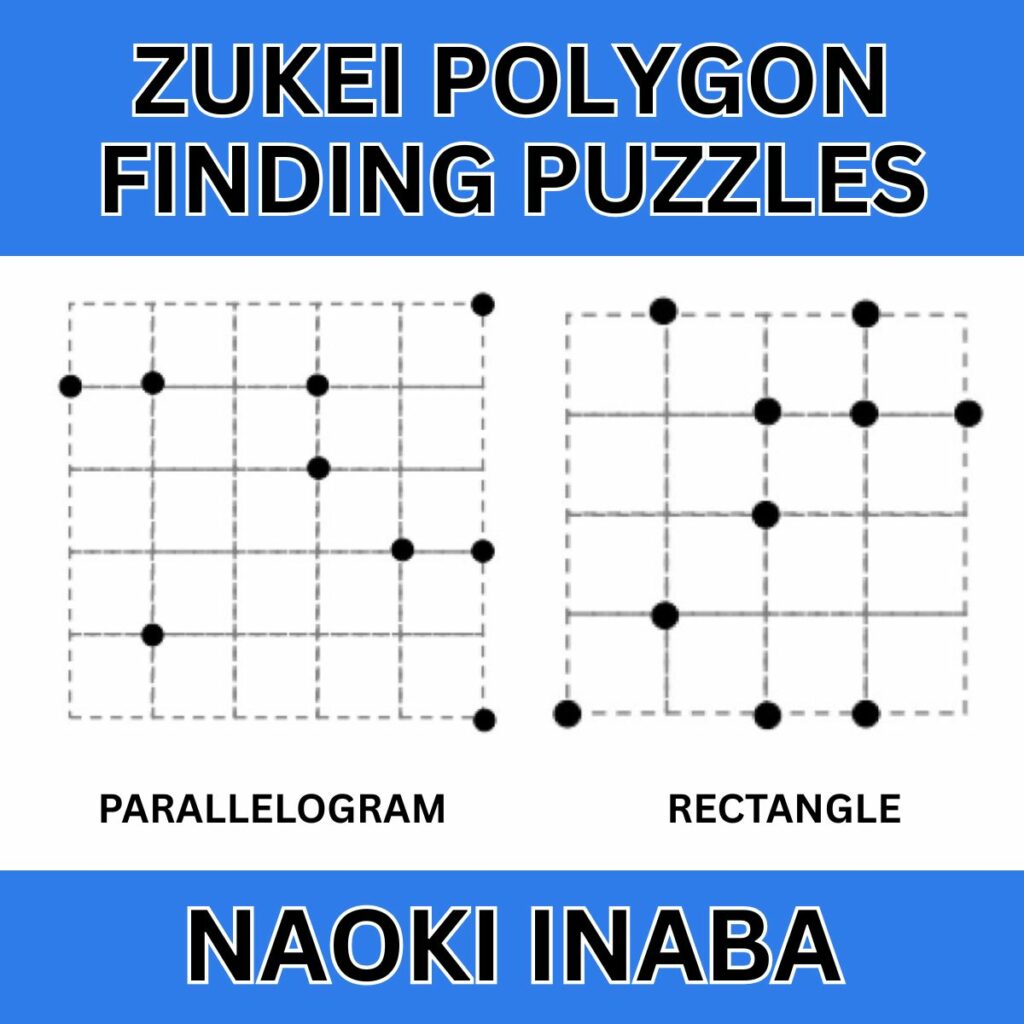
Looking for more printable geometry puzzles for your classroom? Here’s just a few examples of other geometry puzzles I have shared!
Puzzle Source
Zukei puzzles are the brilliant creation of Naoki Inaba. Inaba has posted these puzzles for free on his website, but it can be a bit hard to navigate since everything is written in Japanese.
You may have heard of Inaba from his popular area maze puzzles.
Instructions for Solving Zukei Puzzles
Each zukei puzzle provides you with a grid featuring several dots and the name of a shape. The task is to connect some of the provided dots to form the specified shape. The dots must lie on the shape’s vertices.
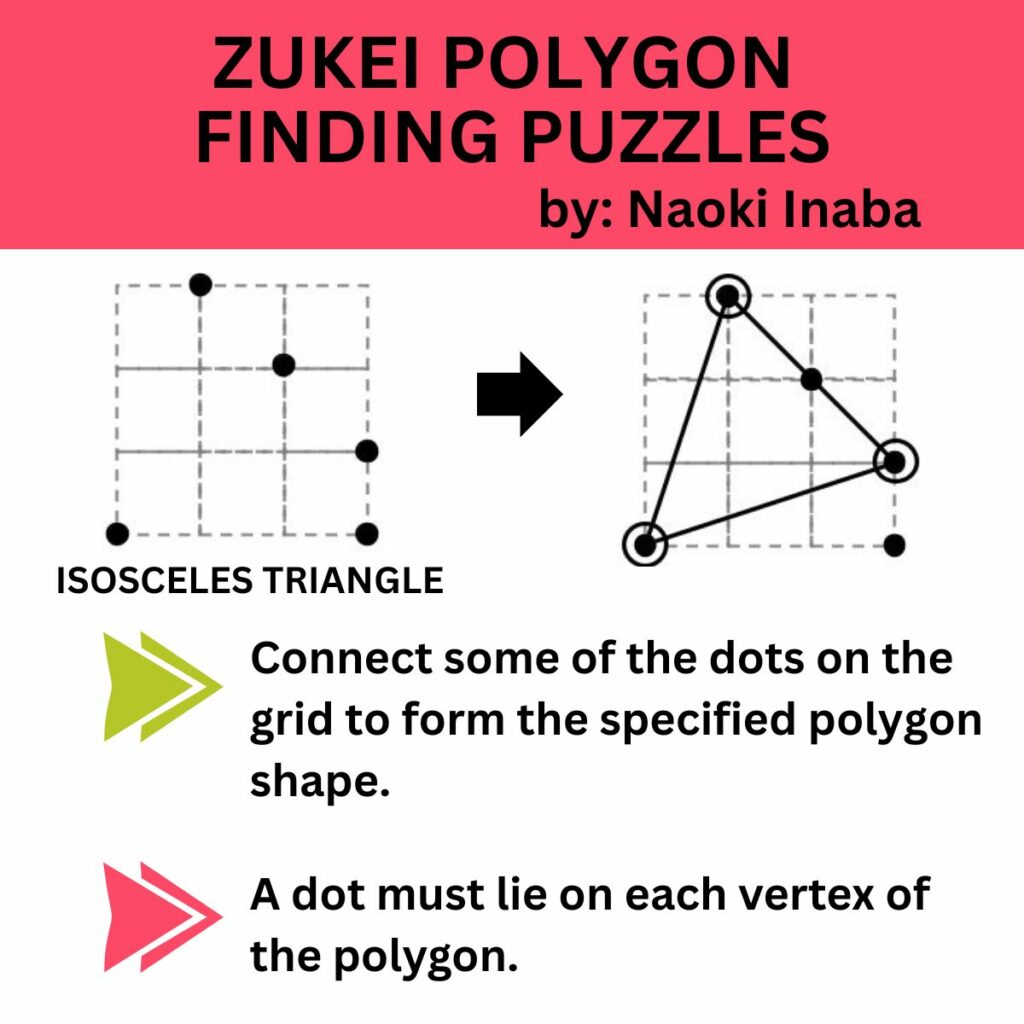
The instructions for the puzzles on Inaba’s website are probably crystal clear if you can read Japanese. Inaba’s original file features 42 puzzles.
I used google translate to translate the clues for each puzzle. I made this google doc as a key to allow the puzzles to be used in an English speaking classroom.
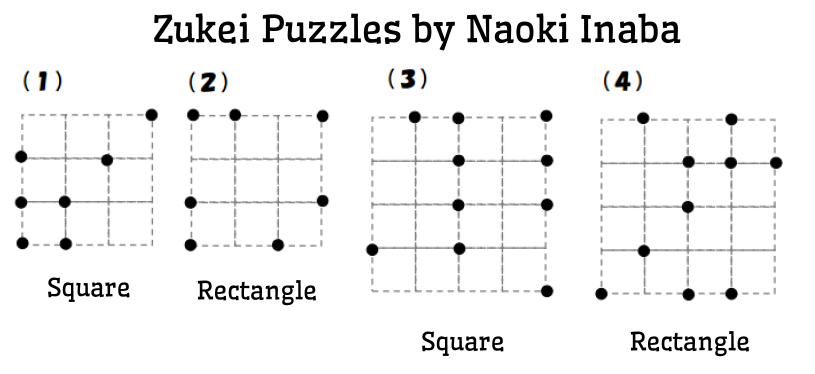
This puzzle is perfect for practicing geometric vocabulary regarding various polygons. These puzzles focus on 8 different shapes:
- Square
- Rectangle
- Isosceles Triangle
- Isosceles Right Triangle
- Right Triangle
- Rhombus
- Trapezoid
- Parallelogram
Using these Puzzles in the Classroom
I have used these puzzles with high school students. They are generally familiar with all of these shapes, but they often need a reminder of the meaning of the word isosceles. They also tend to confuse trapezoids and parallelograms.
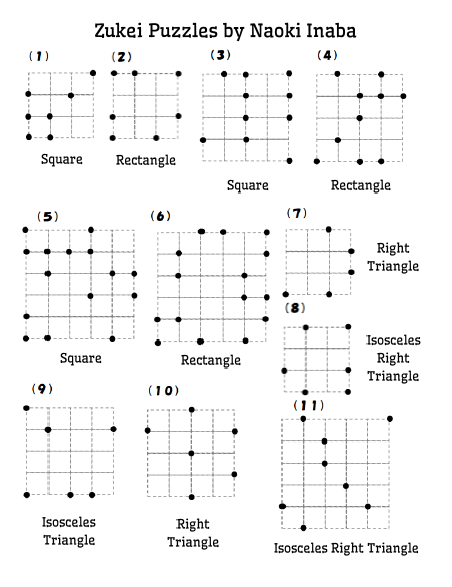
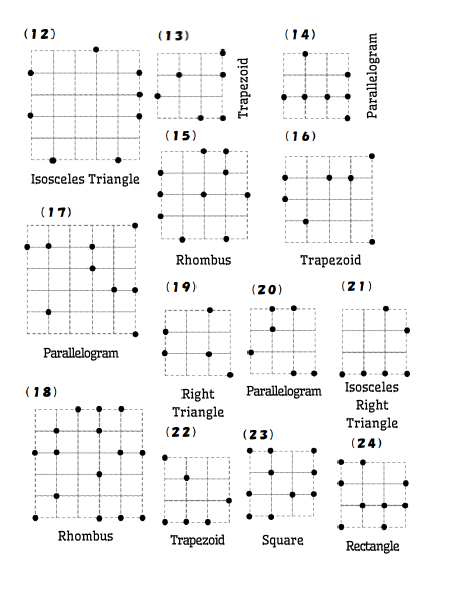
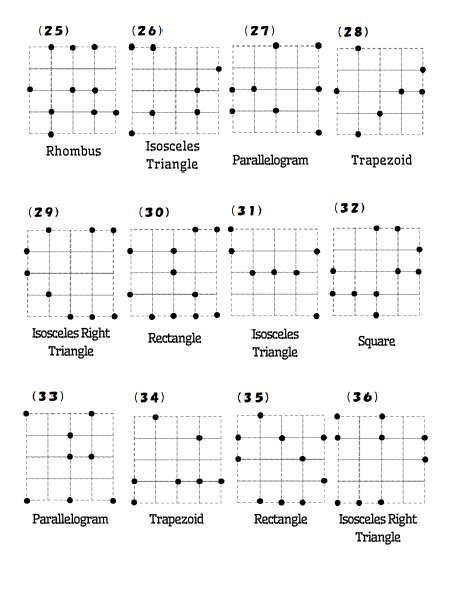
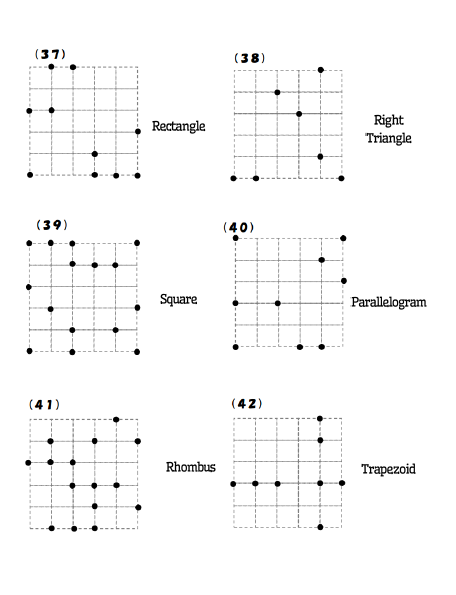
If you want to use these puzzles with younger grades, it would be easy to use the snipping tool to only select the puzzles that match with the vocabulary you are wanting to practice or your students are familiar with.
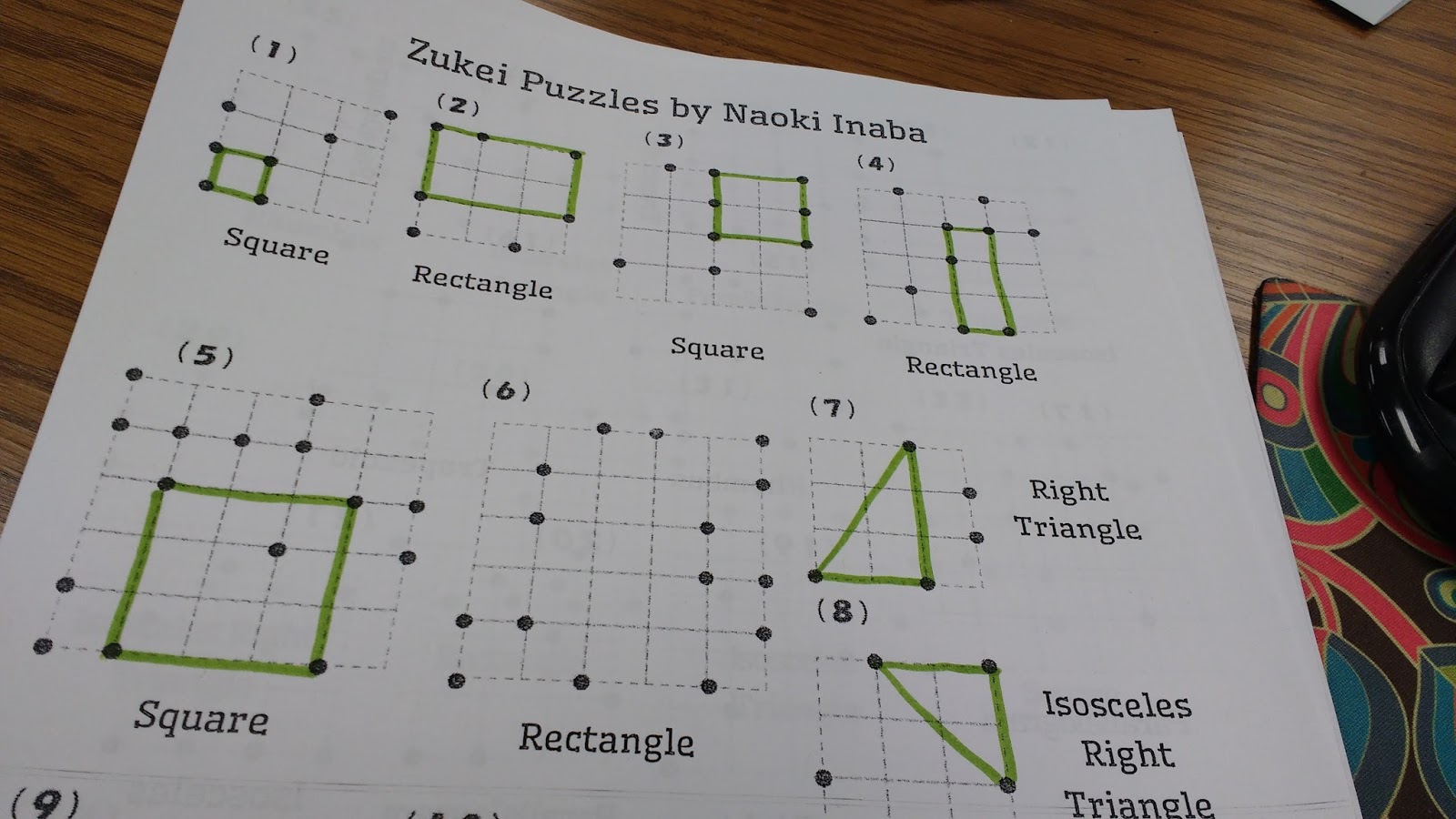
These puzzles are fun. And, they are frustrating! We won’t talk about how long I was stuck trying to figure out puzzle number 6! In fact, I only figured it out because a student spoiled it for me!
Files for Zukei Puzzles
I feel like I need to remind you once again that I did not create these puzzles. I simply re-formatted them to make them usable in English speaking classrooms. All of the puzzles were created by Naoki Inaba.
Click here to SAVE the file to your device.
Zukei Puzzles by Naoki Inaba (PDF)
8455 saves – 491.23 KB
Puzzle Solutions
Puzzle solutions are available on a password-protected solution page. I do not openly post the puzzle answer keys because one of my goals as a resource creator is to craft learning experiences for students that are non-google-able. I want teachers to be able to use these puzzles in their classrooms without the solutions being found easily on the Internet.
Please email me at sarah@mathequalslove.net for the password to the answer key database featuring all of my printable puzzles and math worksheets. I frequently have students emailing me for the answer key, so please specify in your email what school you teach at and what subjects you teach. If you do not provide these details, I will not be able to send you the password.
Not a teacher? Go ahead and send me an email as well. Just let me know what you are using the puzzles for. I am continually in awe of how many people are using these puzzles with scouting groups, with senior adults battling dementia, or as fun activities in their workplace. Just give me enough details so I know you are not a student looking for answers to the puzzle that was assigned as their homework!
Other Sources of Zukei Puzzles and Zukei Resources
More Original Zukei Puzzles from Mark Chubb
Want even more zukei puzzles? Mark Chubb has created three sets of additional zukei puzzles in PDF form. I especially like that the third set has students find multiple shapes on one grid! Each set has twelve additional puzzles.
Desmos Activity Builder Version of Zukei Puzzles
Scott Miller has recreated Inaba’s original 42 puzzles in Desmos Activity Builder.
Zukei Puzzle Solver/Puzzle Creator
Shaun Carter has coded a zukei puzzle solver. Build a grid of dots and specify the shape. Your solution will be found instantly.
This would be a great tool if you wanted to create your own puzzles and be sure there was exactly one solution.
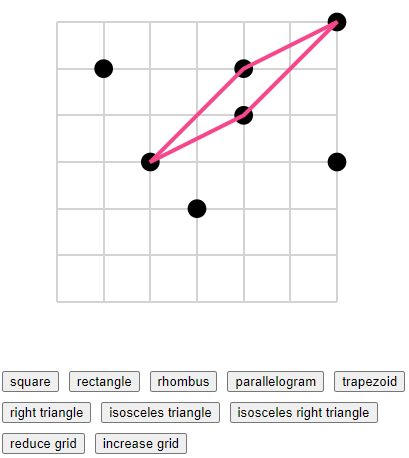
How to Solve Zukei Puzzles Video by Jennifer Chou
Jennifer Chou has filmed a short video about how to solve zukei puzzles. This would be especially great if you are trying to use these puzzles in a distance learning setting.
Online Zukei Puzzle Applet from Henk Reuling
Want to play these puzzles online? Henk Reuling, a maths teacher in the Netherlands, has coded a lovely applet for solving an infinite number of puzzles. You even get to choose the type of shape you want to look for!
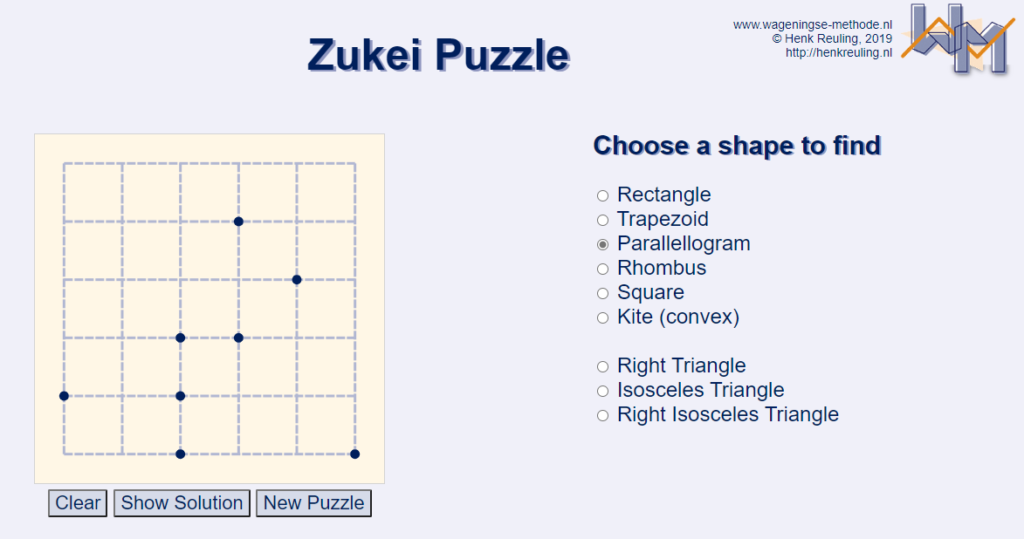
48 Additional Zukei Puzzles from Don Steward
The late Don Steward created 48 additional zukei puzzles which he published under the name “Find the Shape Puzzles.”
Delicious Zukei Puzzles?
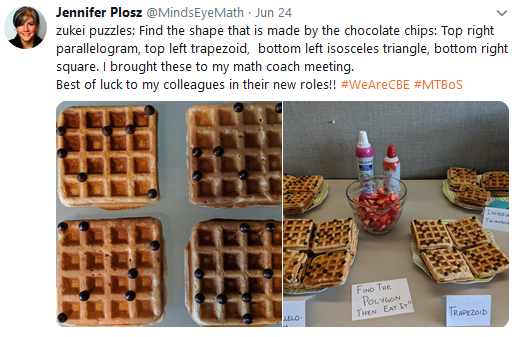
Check out these waffles that were turned into zukei puzzles with the addition of chocolate chips. Math teachers know how to have the best fun!

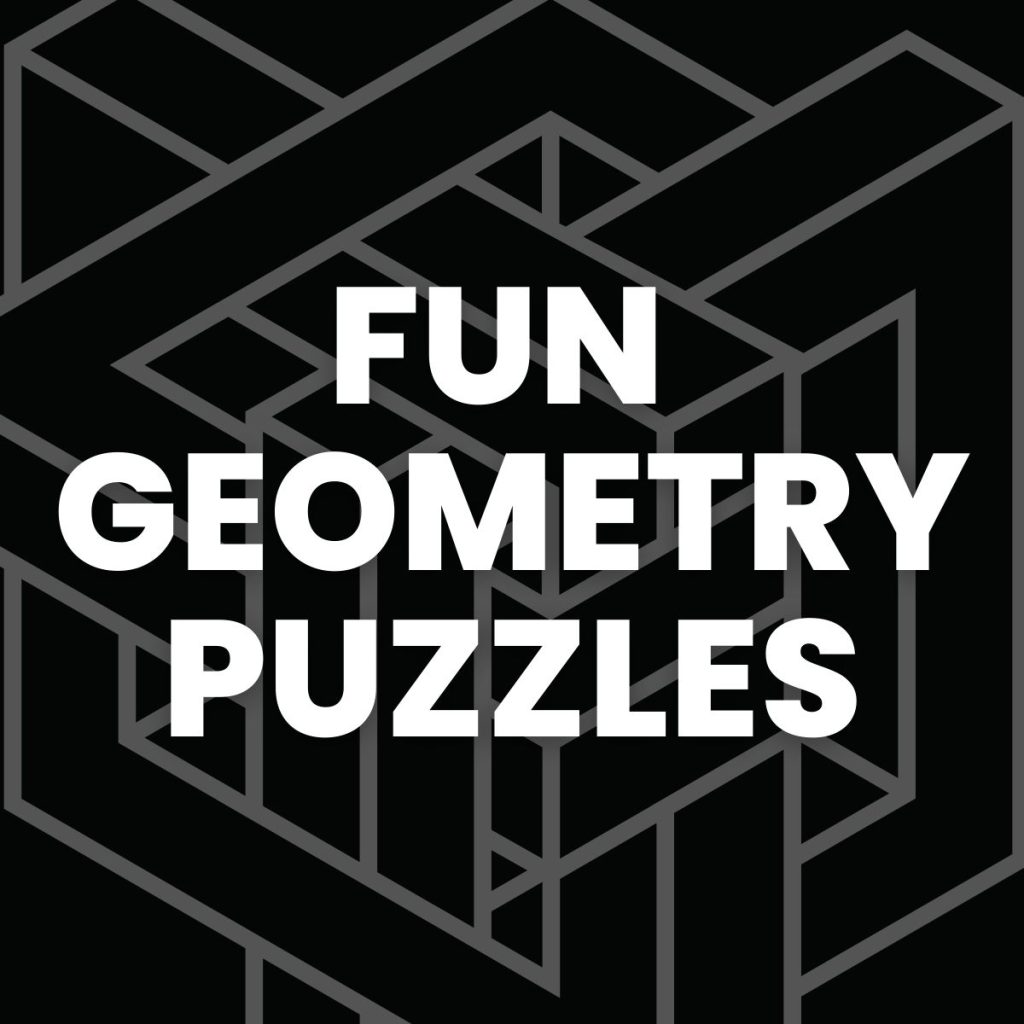
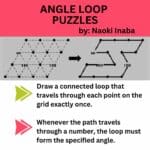
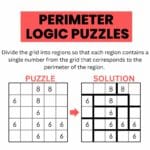
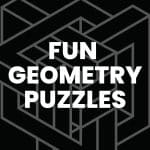
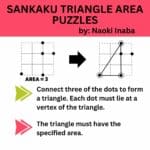
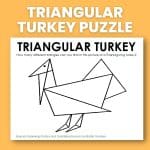
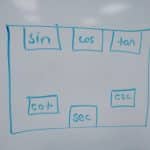
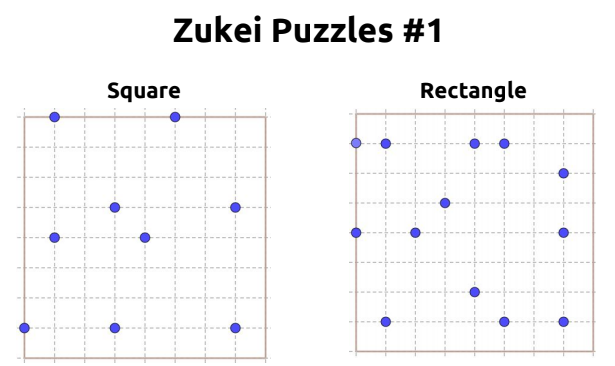
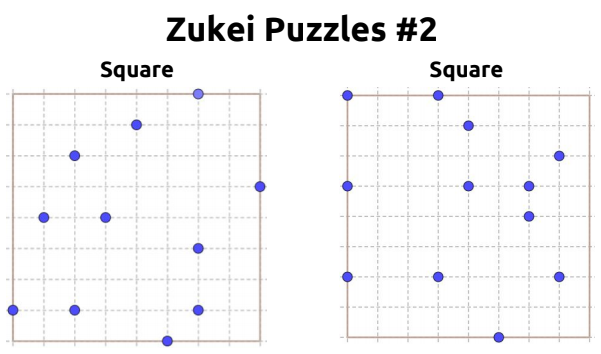
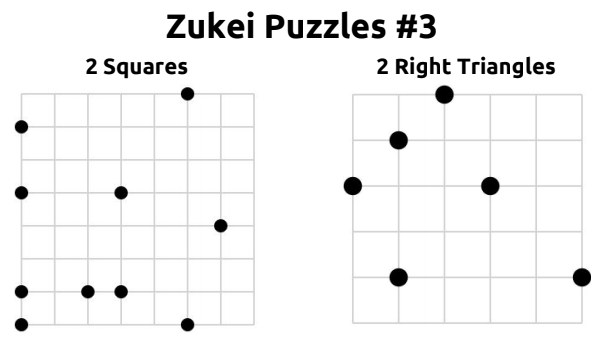
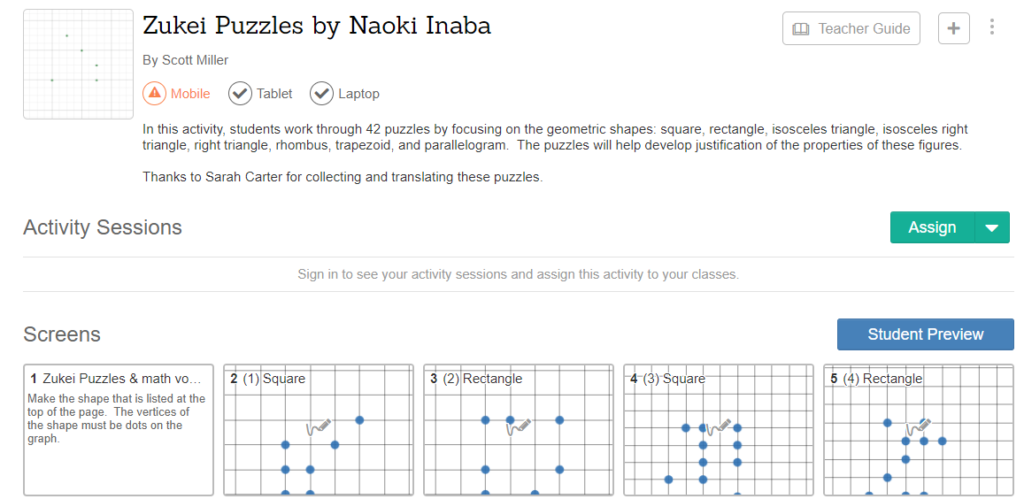
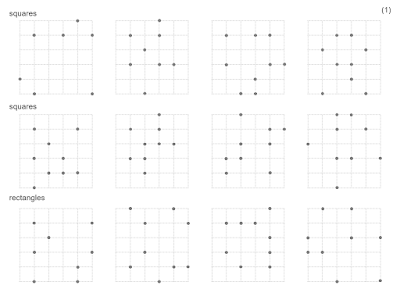
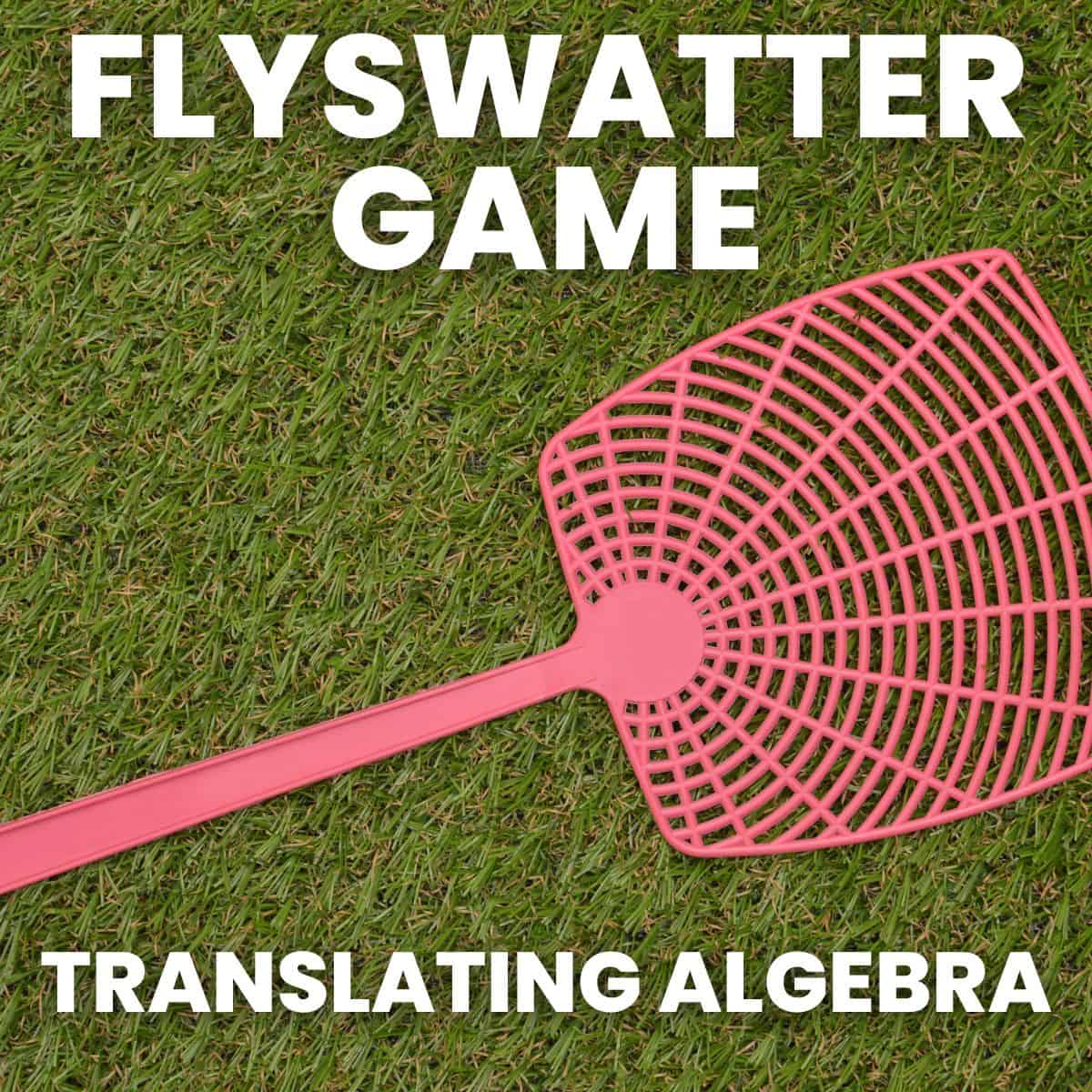
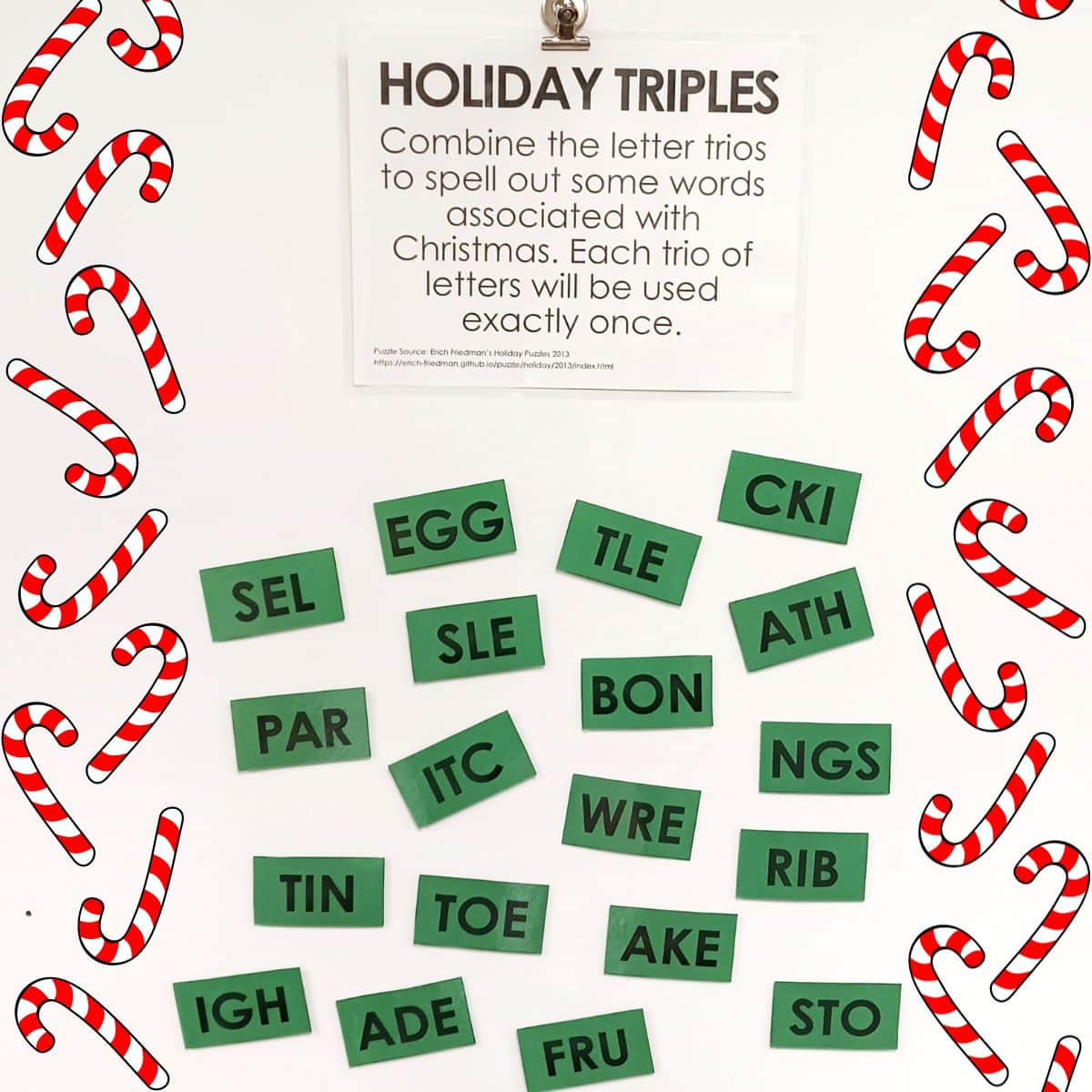
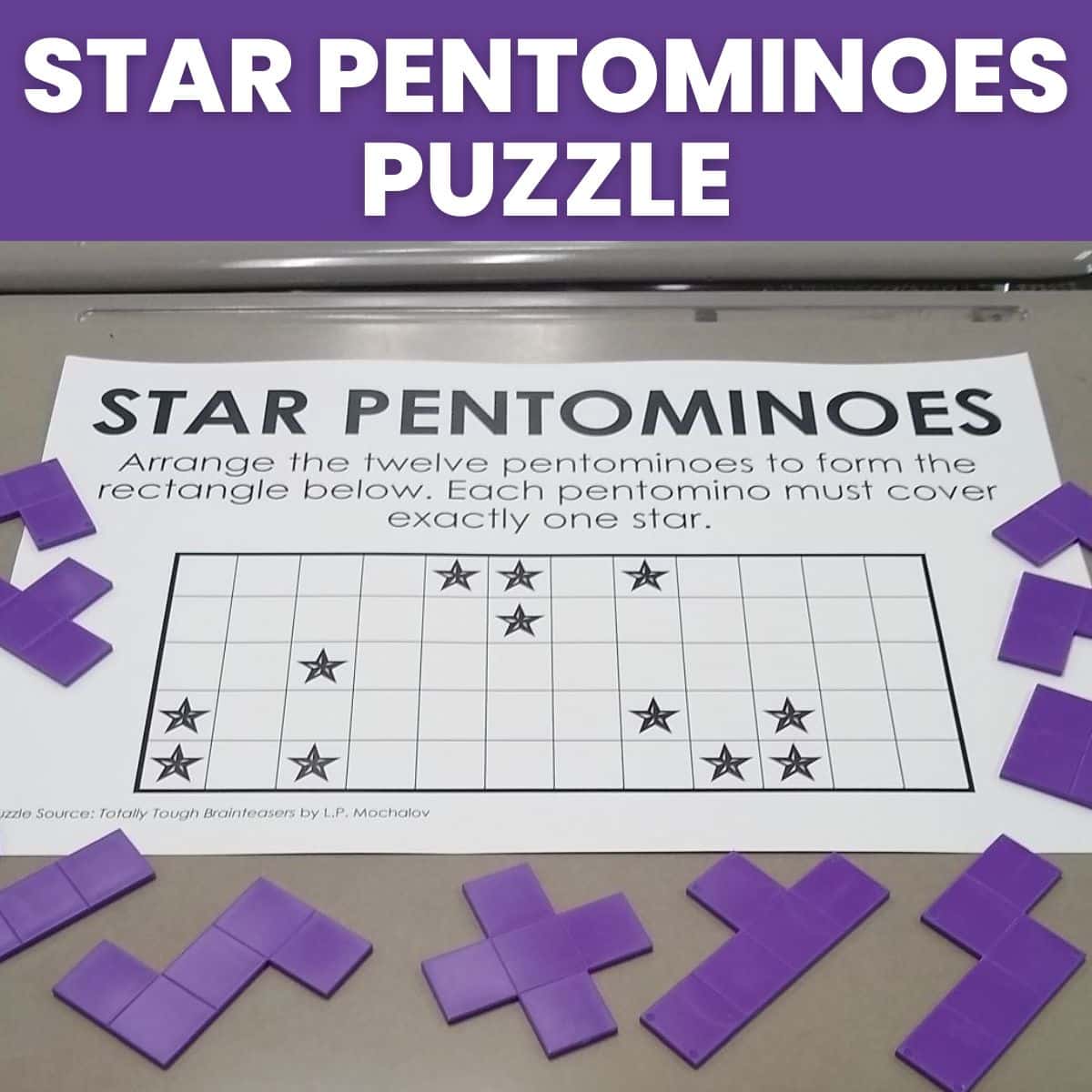
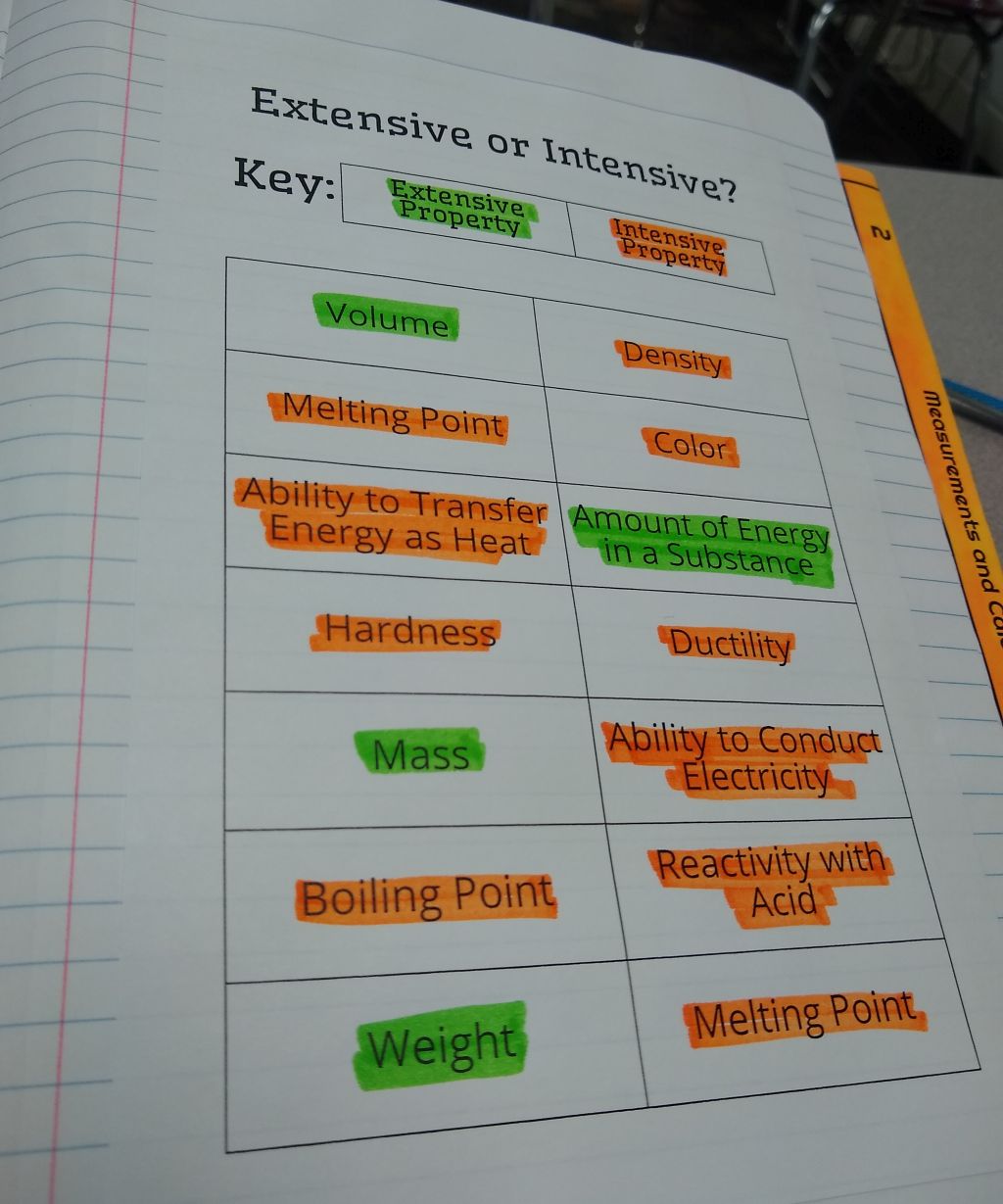

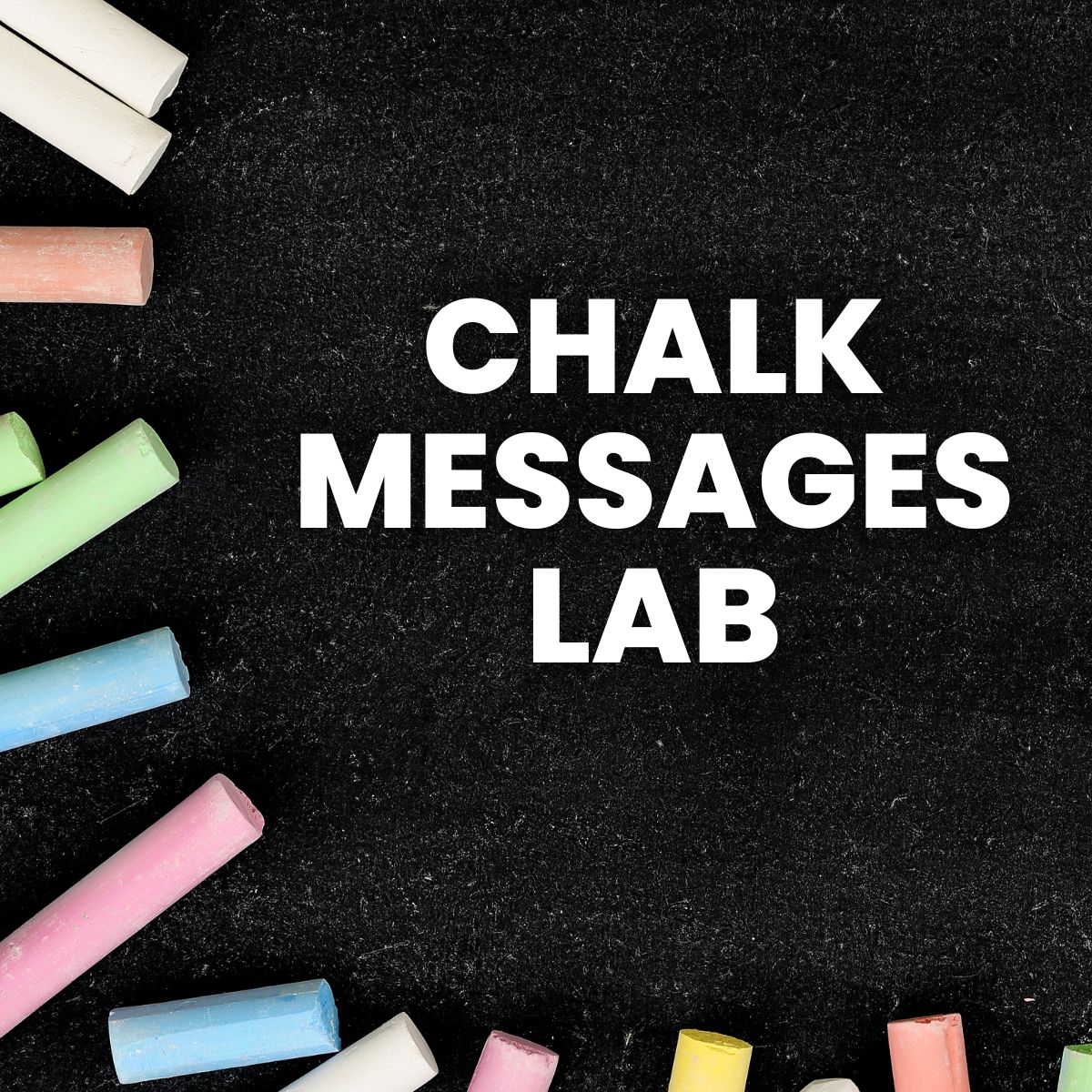
What if in the algebra version you gave the equations (like the shape) with no coordinates. Then they would have to interpret relative change in points. Two lines might let them specify the coordinates. I'll tweet a possible example to you!
Or what about using Desmos to graph the shape? Something like this perhaps: https://www.desmos.com/calculator/lielclnypn
this version sounds very interesting John.. I am getting some idea what you said, but not very clear… if you can please share an example with me, also on rupesh.gesota[at]gmail.com
Sarah you are a generous genius! Love this. For geom students, they can use coordinate geom to PROVE they are correct or that the square is a square etc…
Happy Holidays to you!
One last question, what are the directions? Find the shape that is asked within the dots? Prove it?
Is there more than one solution for some of them? The way I understand it, you need to find the vertices of the required shape from the highlighted points. Is this correct?
These make fun little holiday gifts! 🙂 Thank you for the translations.
Thanks so much for all of your work translating and formatting the puzzles! I'm very excited to challenge my 6/7s with it!
J
ps – there's a really nice connection between these puzzles and this websketch:
http://www.sineofthetimes.org/a-hidden-polygons-puzzle/
J
Thanks for compiling these, Sarah. "Practicing Geometric Vocabulary," sells these little gems short, though! It's one thing to remember that an isosceles right triangle has three sides, and an included right angle between two of those congruent sides. It requires an entirely different skill set to track down that shape in this field of dots! I wonder what that skill is called.
#6 also has another solution. If you consider the bottom left corner to be the origin, the rectangle has vertices at (2,0),(1,1),(5,2),(4,3). 🙂
Actually, that's a parallelogram, not a rectangle. Check to see the slopes of the sides- they aren't opposite reciprocals.
So much fun for my grade 8 students! Thanks for taking the time to translate and post these. It's much appreciated!
Sarah- thanks SOOOO much for the translating and formatting!!!! These are awesome. A word of warning- if your students have instant access to the internet (iPads for all at my school), they will be very tempted to google Naoki Inaba and find all the puzzles and their solutions. Doesn't leave much to the imagination…
Even though I am only giving my kids one page at a time, next year I will block out the name of the puzzles and the author before I hand out the first one. That way, they can't google it and spoil the fun. I will put Zukei and Naoki Inaba on the LAST page instead- especially since the last page is the hardest. I want to give him credit, but not give the students the cheaty path to the answers. (My kids are so darn competitive!)
-snapdragon
Please excuse me if this question makes me sound a bit thick, but I'm not totally sure of what the instructions are. Is the user to construct the given polygon using some combination of the dots as vertices? I notice some other folks had the same confusion.
Thanks in advance…
Yes, find the given shapes using the dots as vertices.
Would you be willing to share the answers?
Google Zukei or Naoki Inaba. You will find the puzzles and solutions.
Answers are posted on Inaba's website here: http://inabapuzzle.com/study/zukei_a.pdf